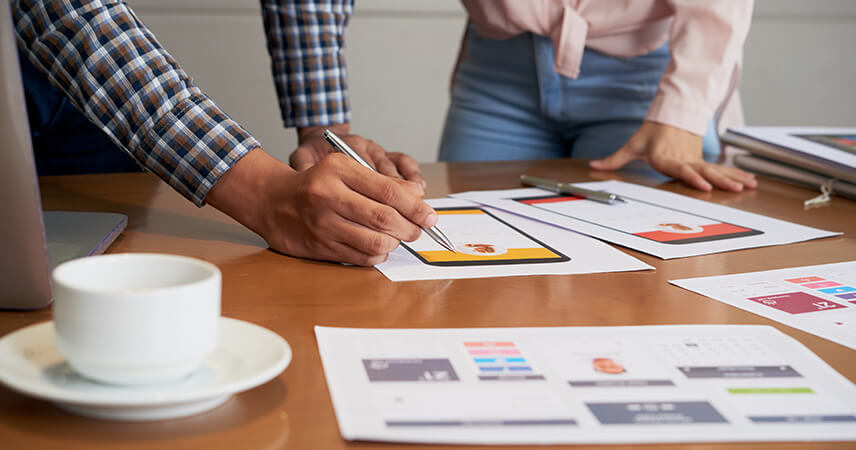Web Designing
- Home
- Web Designing

Web Designing
Introduction to Web Design
Web design is the process of creating the visual and functional aspects of websites. It involves planning, conceptualizing, and arranging content online. Modern web design goes beyond aesthetics to include the website’s overall functionality and user experience (UX).
Key Components of Web Design
Layout: The structure and arrangement of a website’s elements. A good layout ensures that information is presented clearly and logically, making it easy for users to navigate the site.
Color Scheme: The combination of colors used on the website. Colors should align with the brand’s identity and evoke the desired emotions in visitors.
Typography: The choice of fonts and how they are used. Typography affects readability and the overall aesthetic of the website.
Images and Graphics: Visual elements that complement the content and enhance the user experience. High-quality images and graphics can significantly impact a site’s appeal.
Navigation: The system that allows users to move around the site. Good navigation is intuitive and helps users find the information they need quickly and easily.
Content: The information presented on the website. Quality content is crucial for engaging visitors and achieving the site’s goals.
Responsiveness: The design’s ability to adapt to different screen sizes and devices. A responsive design ensures a seamless experience across desktops, tablets, and smartphones.
Principles of Effective Web Design
Simplicity: Keep the design clean and straightforward. Avoid clutter and focus on essential elements to improve usability.
Consistency: Ensure uniformity in the design elements across all pages. Consistent design helps users understand the navigation and functionality quickly.
Visual Hierarchy: Arrange elements in a way that draws attention to the most important information first. Use size, color, and spacing to create a clear visual hierarchy.
Accessibility: Design websites that are accessible to all users, including those with disabilities. Use proper HTML tags, provide alt text for images, and ensure good contrast.
User-Centric Design: Focus on the needs and preferences of the users. Conduct user research and usability testing to understand and implement what works best for the target audience.
Loading Speed: Optimize the website to load quickly. Fast-loading sites provide a better user experience and are favored by search engines.
Web Design Tools and Technologies
Graphic Design Software: Tools like Adobe Photoshop, Illustrator, and Sketch are commonly used for creating visual elements and mockups.
Web Design Software: Platforms like Adobe XD, Figma, and InVision help design and prototype websites.
Content Management Systems (CMS): CMS platforms like WordPress, Joomla, and Drupal make it easier to manage website content and design without deep technical knowledge.
Coding Languages: HTML, CSS, and JavaScript are the foundational languages of web design. Understanding these is crucial for creating and modifying web pages.
Frameworks and Libraries: Bootstrap, Foundation, and other CSS frameworks, along with JavaScript libraries like React and Vue.js, help streamline the design and development process.
Trends in Web Design
Dark Mode: An alternative color scheme that uses darker backgrounds. It reduces eye strain and can enhance the aesthetic appeal of a website.
Minimalism: A design approach that emphasizes simplicity and functionality. Minimalist designs focus on essential elements and avoid unnecessary decorations.
Micro-Interactions: Small, subtle animations that provide feedback to users. They enhance user engagement and make the website feel more interactive.
3D Elements: The use of three-dimensional visuals and animations to create a more immersive experience.
Voice User Interface (VUI): Integration of voice recognition and commands to interact with the website, making navigation easier for users.
Asymmetrical Layouts: Breaking away from traditional grid-based designs to create more dynamic and unique layouts.
Conclusion
Web design is a critical aspect of creating a successful online presence. By combining aesthetic appeal with functionality and user-centered principles, effective web design can significantly enhance user experience and achieve business goals. Whether you are building a simple blog or a complex e-commerce site, understanding the fundamentals and staying updated with the latest trends is essential for creating impactful and engaging websites.
